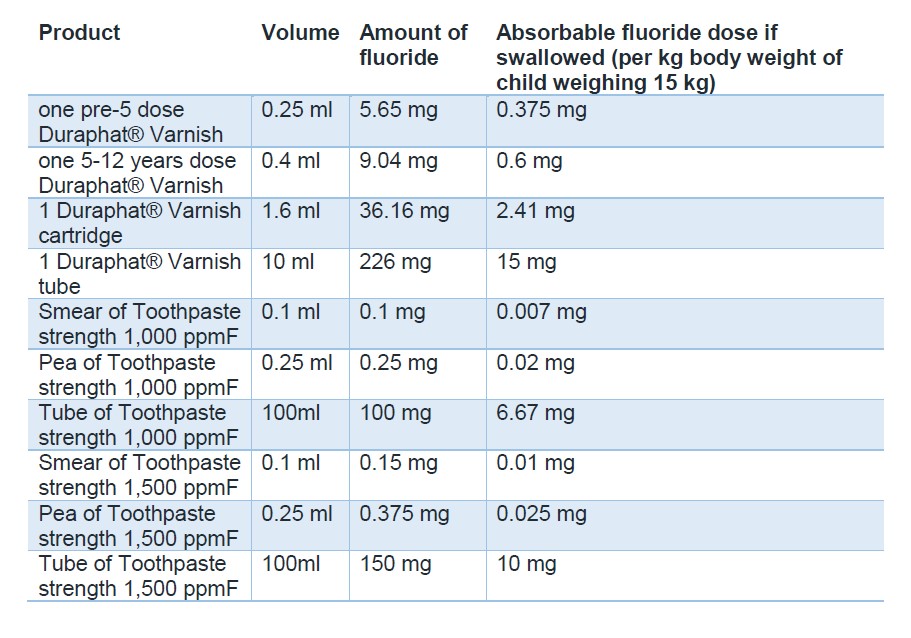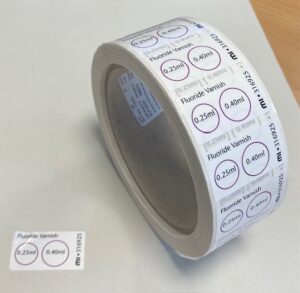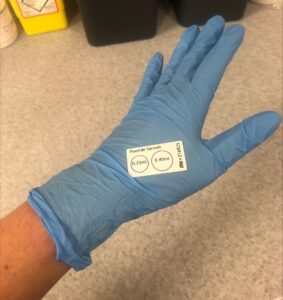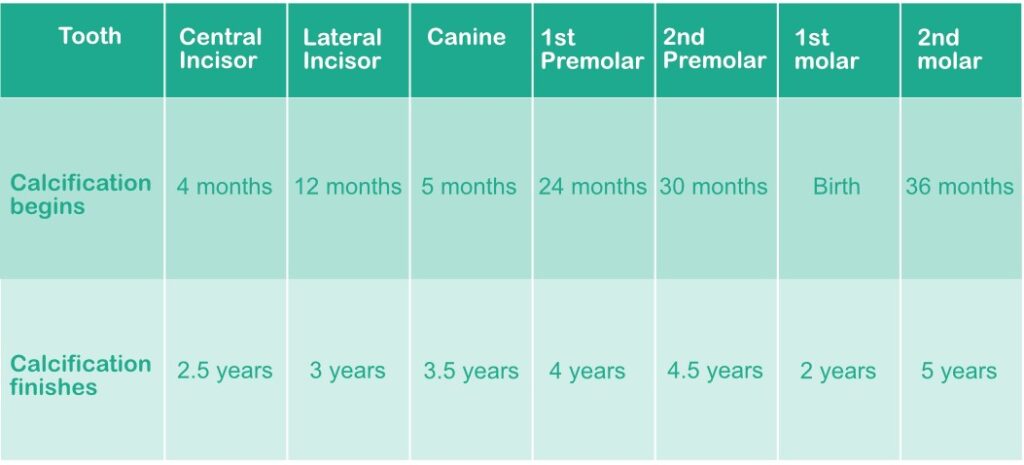Fluorosis
To reduce the risk of mild fluorosis and reinforce good oral health the amount of toothpaste used by children should be supervised. In order to balance the benefits of preventing dental caries against the potential harms of fluorosis associated with ingesting fluoride toothpaste, children under 3 years of age should use no more than a smear of toothpaste.
Absorbable doses of fluoride
Ingestion of excess amounts of anything can be toxic and fluoride is no exception.
The toxic dose of fluoride ingestion is estimated at 5 mg of fluoride per kg of child body weight (the average 3 year old weighs 11-20kg). The dose of 0.25 ml of Duraphat® contains 5.6mg of fluoride – well within safe levels.

A child weighing 15kg would need to swallow 75mg of fluoride to be considered to have ingested a toxic amount and a child weighing 20kg would need to ingest 100mg of fluoride. This means that a child weighing 15kg would have to swallow one third of a tube or two whole cartridges of Duraphat® fluoride varnish or three quarters of a tube of 1000ppm toothpaste to be considered to have ingested a toxic amount.
In the Childsmile Programme only one dose of Duraphat® should be available for a child at any one time. As only one dose is dispensed for each individual child and the remainder is locked away, there should be no opportunity for a child to ingest more than a single dispensed dose. In dental practices, the appropriate dose of Duraphat® should be dispensed for the age of the child and the remainder should be put in a closed cupboard or drawer to which the child should have no access. In nursery and school, once dispensed, the remainder of the Duraphat® should be locked in the Childsmile trolley-box or equivalent.


Acute fluoride toxicity in small amounts causes stomach irritation, nausea and vomiting. In very high amounts/quantities, fluoride can cause serious systemic toxic signs and symptoms including the possibility of death. Fluoride is very quickly absorbed from the stomach; a child suspected of swallowing excessive levels of fluoride should be given a glass of milk to drink and then quickly transferred to the local A&E Department for further assessment.
The fluoride varnish application relies on the topical action of fluoride, although inevitably a little of the varnish will be swallowed. Fluoride varnish will be offered twice a year from the age of two years in NHS dental practices, with some children offered an additional two applications via target establishments in the Childsmile Fluoride Varnish programme. Theoretically, this means a child could receive fluoride varnish four times a year (twice in Childsmile Practice and twice in Nursery or School) – a dose still within the safe limits for either acute toxicity levels or chronic ingestion resulting in fluorosis. The optimum benefit would be if the child were to receive the four doses equally spaced throughout the year, but this may be difficult logistically. Even if the child were to receive the nursery dose and the practice dose on consecutive days (or even on the same day), there would be no risk of toxicity as two doses would give the child 11.3mg of available fluoride, still well within the dose safety margin. There would also be very little chance of fluorosis, even with two doses given in quick succession as, after the age of 4 years, most of the adult teeth will have already calcified.

As can be seen from the table above, most of the teeth, and certainly the anterior teeth, will have calcified by the age of 3.5 years.
This page is currently under review if you have any feedback please email nss.childsmile@nhs.scot